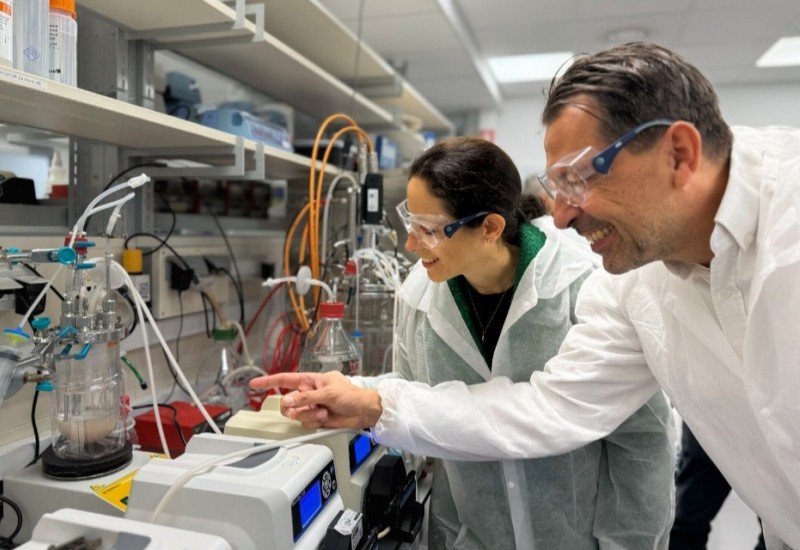Feature article - To gain a step on the competition, focus on product carbon footprint
Marko Lange, product manager for SAP, looks at the need to measure the carbon footprint of your entire supply chain
Amid a global push for greenhouse gas (GHG) emission reductions and more responsible resource stewardship, newcomers like German data analytics start-up Carbon Minds, along with some of the biggest names in the chemicals business, are mobilising to meet that challenge.
Using a proprietary methodology, Carbon Minds has developed a lifecycle inventory containing product carbon footprint (PCF, the total lifecycle GHG emissions associated with a product) data on more than 1,000 chemicals across more than 190 regions in China, North America and Europe. TÜV Rheinland has certified its methodology and data quality for compliance with ISO 14040/14044.
Carbon Minds recently announced a partnership with ICIS to provide independent, supplier-specific, carbon emission data on chemical products. Noting that Scope 3 emissions represent more than 80% of a chemical company’s total emissions on average (much of which is attributable to raw materials), Carbon Minds managing director Arne Kätelhön said the goal is to “make supplier-specific emissions data more accessible and help businesses fully understand the emissions that are being added to their products through the supply chain.”
On a separate but similar track, BASF is seeking broad chemical and process industry support for a methodology for calculating product PCF from cradle to gate. BASF’s Strategic CO2 Transparency Tool (SCOTT) was developed to measure PCF using a consistent ISO-compliant methodology. The company is applying SCOTT to calculate emissions for 45,000 of its products, while also licensing the methodology out to software developers so other players in the chemicals business can use it.
Drivers for PCF management
What is driving the effort to manage PCF more closely? One factor is the growing preference among customers, employees, shareholders and investors to align with companies that make — and follow through on — carbon-reduction commitments.
Another is the chemical industry’s status as a major global GHG emitter and energy consumer, a function of chemical products being embedded in so many industrial value chains. As a result, regulators in markets around the world are pursuing new carbon-reduction policies like the EU’s pending CBAM carbon tariff proposal, which, if ultimately approved, would probably apply directly and indirectly to chemicals products.
There are two sides to the carbon footprint coin. On one side, chemical companies now face added pressure to manage and disclose their Phase 1, 2 and 3 emissions from raw materials to end of life (or, preferably, to rebirth as a circular product). On the other, they now have a real opportunity to turn PCF into a true competitive advantage by focusing on four areas:
1. Full visibility and transparency around carbon footprint across the value chain
2. Advocating for a widely recognised, consistent standard for determining PCF
3. Processes and practices that synch the entire business to PCF standards and sustainability-related analytics
4. Developing and/or participating in business ecosystems
Visibility & transparency
To report on and market positive PCF performance, companies must have a clear line of sight into the emissions associated with each and every product. And that visibility into resource consumption and GHG emissions must extend beyond a company’s own operational walls, to the entire value chain.
Calculating PCF will require companies to gather trusted, reportable and auditable carbon footprint data from their raw materials suppliers, logistics partners and others, as BASF is doing with its Supplier CO2 Management Programme, which, the company said, is designed to create transparency on the PCFs of its raw materials. Having that level of transparency enables a company to steer its product portfolio based in part on PCF, so it can meet its own decarbonisation regulatory requirements and internal goals, while providing products that ultimately enable customers to do likewise.
As well as gathering that information internally companies also could choose to get that data from a third party, then use it to identify and address ‘emission hot spots’ in their supply chain, or to market themselves as a low-PCF brand or supplier.
Advocating for a standard
The work of Carbon Minds, BASF and others, like the Columbia University Centre on Global Energy Policy with its carbon accounting initiative, is driving progress toward establishment of a transparent, widely accepted and compliant standard for determining PCFs at scale.
To get there, stakeholders up and down the chemicals value chain will need to find consensus on several key issues, including the standard syntax and semantics such a standard would use for data exchange, and the technology that is most practical for ensuring the integrity and security of data — a blockchain-based framework, for example. However the standardisation effort shakes out, it is vital that chemical companies be able to collect, onboard, standardise and report data from distributed, non-standardised sources.
Processes & practices
A good example of a company that synchs the entire business to PCF standards and sustainability-related analytics is B2B food and beverage ingredient supplier Doehler, which has embraced PCF data-standardisation and analytics capabilities to gain insight into carbon usage by product, plant and profit centre. Now it can more readily identify the specific production steps and raw materials causing emission hot-spots, as well as lower-carbon raw material and energy suppliers, and equipment in its operations that needs to be replaced with more modern, resource-efficient models.
To support this, we see companies moving away from traditional life-cycle-analysis approaches to calculating PCF, to a natural resource accounting approach similar to conventional cost accounting, where calculations are based on actual natural resource consumption data tied to specific activities, processes and products rather than theoretical laboratory data, and CO2 equivalent is the unit of measure.
This approach should give companies a more exact read on the footprint associated with specific products. Business ecosystems From standards development to secure data exchange to collaborative product development, the effort to get a firmer grip on PCF will depend largely on the development of digitally connected business ecosystems to enable the free flow and sharing of trusted data and insight among multiple stakeholders.
“Carbon transparency is a backbone for steering towards net zero greenhouse gas emissions,” said Alessandro Pistillo, BASF’s director of digital strategic projects, explaining the logic behind the SCOTT initiative. “Our ecosystem of partnerships will accelerate the calculation, reporting and exchange of PCF data among actors along value chains.”
As a key part of so many industrial value chains, chemical companies today can choose whether they want to be a lead actor in the carbon-reduction effort. Soon they may have no choice but to embrace that role.
Contact:
Marko Lange
SAP















